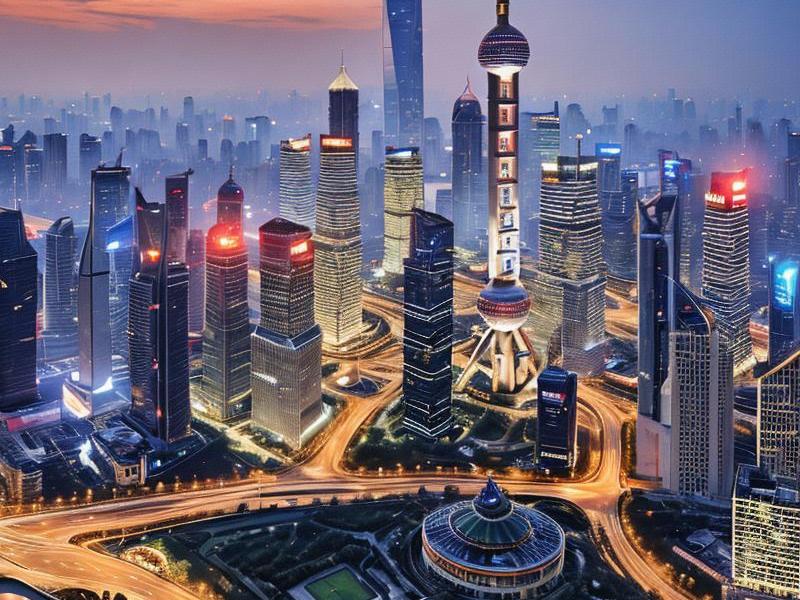Shanghai and Its Surrounding Areas: A Comprehensive Overview
⏱ 2025-04-27 13:13 🔖 上海龙凤419
📢0℃

Nestled along the eastern coast of China, Shanghai stands as a beacon of modernity and progress. As the largest city in the country, it is not only a global financial hub but also a melting pot of cultures, history, and innovation. However, Shanghai's significance extends far beyond its bustling urban core. The surrounding areas, including the Yangtze River Delta region, play a crucial role in shaping the city's identity and driving its continued growth.
The Yangtze River Delta, often referred to as the "Golden Triangle" of China, encompasses Shanghai, Jiangsu Province, and Zhejiang Province. This region is home to some of the most economically developed and populous areas in the country. Together, they form a cohesive economic zone that contributes significantly to China's GDP and global trade.
One of the key factors behind the success of this region is its advanced infrastructure. Shanghai, as the central node, boasts a well-connected transportation network that includes two major international airports, several high-speed rail lines, and an extensive highway system. This connectivity facilitates the seamless movement of goods, services, and people, fostering economic integration within the region.
The surrounding provinces of Jiangsu and Zhejiang are renowned for their manufacturing prowess. Jiangsu, with cities like Suzhou and Wuxi, is a leader in high-tech industries, including electronics, information technology, and biotechnology. Zhejiang, on the other hand, is famous for its textile and garment industry, as well as its vibrant private sector. The collaboration between these provinces and Shanghai has created a robust supply chain, enabling the region to compete on a global scale.
上海龙凤论坛419
Culturally, Shanghai and its surrounding areas are a fascinating blend of tradition and modernity. Shanghai, with its iconic skyline and historic Bund, offers a glimpse into the city's colonial past and its transformation into a global metropolis. The surrounding provinces, however, retain much of their rich cultural heritage. From the ancient water towns of Jiangsu, such as Zhouzhuang and Tongli, to the scenic landscapes of Zhejiang, including West Lake and the Thousand Island Lake, the region is a treasure trove of cultural and natural attractions.
Tourism plays a vital role in the economy of Shanghai and its surrounding areas. Visitors are drawn to the city's modern landmarks, such as the Oriental Pearl Tower, the Jin Mao Tower, and the Shanghai Tower, as well as its vibrant shopping districts, like Nanjing Road and Huaihai Road. The surrounding provinces offer a more tranquil experience, with opportunities to explore ancient temples, traditional gardens, and picturesque countryside.
The integration of Shanghai with its surrounding areas is not limited to economic and cultural exchanges. Environmental sustainability is also a key focus for the region. Efforts are being made to address issues such as air pollution, water management, and urban sprawl. Initiatives like the construction of green spaces, the promotion of public transportation, and the adoption of renewable energy sources are helping to crteeaa more sustainable future for the region.
上海夜网论坛
Education and innovation are another area where Shanghai and its surrounding areas excel. The city is home to world-class universities and research institutions, attracting top talent from across the globe. The surrounding provinces also have a strong tradition of academic excellence and technological innovation. Together, they form a fertile ground for research and development, driving advancements in various fields, including artificial intelligence, biotechnology, and green technology.
The regional government has recognized the importance of collaboration and has implemented policies to promote regional integration. The establishment of the Shanghai Free Trade Zone (FTZ) is a prime example of this effort. The FTZ serves as a testing ground for new economic policies and reforms, fostering a more open and competitive business environment. It also facilitates international trade and investment, further integrating the region into the global economy.
The integration of Shanghai with its surrounding areas is not without challenges. The rapid urbanization and industrialization have led to issues such as traffic congestion, housing shortages, and environmental degradation. Addressing these challenges requires coordinated efforts from all stakeholders, including the government, businesses, and citizens.
上海品茶工作室
Despite these challenges, the future of Shanghai and its surrounding areas looks promising. The region's strategic location, advanced infrastructure, and innovative spirit position it as a key player in China's development and a model for regional integration. As the world continues to evolve, Shanghai and its surrounding areas will undoubtedly play a crucial role in shaping the future of China and the global economy.
In conclusion, Shanghai and its surrounding areas represent a unique blend of economic power, cultural diversity, and environmental sustainability. The integration of this region is a testament to the potential of collaboration and innovation in driving progress. As we look ahead, the continued growth and development of Shanghai and its surrounding areas will not only benefit the people living there but also contribute to the prosperity of China and the world at large.
Shanghai's Pan-Yangtze Synergy: Engineering a New Urban Civilization【长三角新格局】2025上海大都市圈融合发展白皮书Shanghai's Green Revolution: How China's Megacity is Leading the Sustainable Urban FutureShanghai's She-Economy: How the City's Women Are Leading China's Business RevolutionShanghai's Journey to Becoming a Global Innovation HubShanghai's Nightlife Renaissance: How Premium Clubs Are Redefining Urban EntertainmentShanghai's Techno-Cultural Tapestry: Weaving Blockchain, AI, and Imperial LegacyThe Evolution of Shanghai's Nightlife: How Entertainment Venues Are Redefining Urban LeisureThe Velvet Rope Economy: Inside Shanghai's Exclusive Nightlife RenaissanceNeon Renaissance: Shanghai's High-End Club Culture in the Post-Pandemic Era
海派烟火眉:上海美女的市井诗行与精神注脚《霓虹深处:南京东路百年商业街的进化论》《百乐门到元宇宙:上海娱乐会所进化论》霓虹与檀香:上海高端会所三十年文化流变"四段式模板
7. 历史参考:前两篇分别以"感官革命"和"时空折叠"为切入点,本次需创新视角
8. 时效元素:当前为2025年,可融入AI、元宇宙等现代科技元素
9. 价值导向:展现独立、智慧的当代上海女性形象,规避物化倾向
以下是符合要求的深度特稿:《梧桐树下的方程式:95后女科学家与旗袍实验室的双城记》《石库门密码:上海里弄建筑的时空折叠》《石库门里的时光标本》《梧桐树下的城市镜像》梧桐区镜像:上海女性的空间叙事与身份建构
空间修辞,身体政治,时尚语法,记忆拓扑,社群算法

